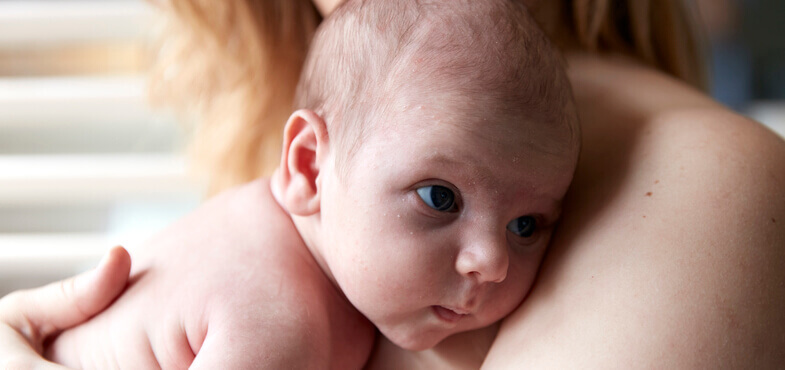Cradle Cap: Causes & What You Can Do to Help
Cradle cap is a common skin condition that affects newborns and young babies. In fact, it occurs in seven out of 10 babies between two and six weeks old. It's important to remember that, while it can look uncomfortable, cradle cap is usually harmless and should clear up on its own within 6 to 12 months.
What is cradle cap?
Cradle cap, medically known as seborrheic dermatitis, is a harmless skin condition which commonly occurs in babies. It should usually clear up within six months, but it can last up to a year.
Most cases of cradle cap develop on the scalp, but in some instances, it can develop on other patches of skin, too. These may include the face and skin folds, such as the armpits and neck.
Cradle cap symptoms
Cradle cap is usually easily identified by a couple of visual signs. Your baby may have cradle cap if you notice:
White or yellow scaly skin patches, or pink with grey or white scales on darker skin tones.
Crusty skin that becomes greasy and flakes off.
Cradle cap might look flaky or irritating, but it isn't usually painful, itchy, or uncomfortable for babies. You can often manage the symptoms at home. However, if you notice cradle cap in other areas of the body or find that it doesn’t respond to home treatments, you should speak to your GP.
What causes cradle cap?
It's not completely clear what causes cradle cap, but many healthcare professionals have begun to link cradle cap to high levels of sensitivity to a certain type of yeast called Malassezia.
The glands on a baby's head naturally produce sebum containing Malassezia. Sensitivity to, or overproduction of, sebum could potentially be behind your baby's flaking or scaly scalp.
The good news is that cradle cap isn't contagious and can't be passed from child to child. It also isn't likely to be caused by poor hygiene, diet, or allergies. Some people do find, however, that cradle cap gets worse if their baby is generally unwell or not sleeping enough, or during cold weather.
How to get rid of cradle cap
There isn't a cure for cradle cap, but you should find it clears up on its own within six to 12 months. You shouldn't typically need to seek a diagnosis from a medical professional.
Remember, cradle cap isn't harmful or irritating, but there are things you can do to help with the dry and scaly appearance. These can include:
Massaging a moisturiser lightly into your baby's scalp.
Using a soft brush to remove dead skin.
Avoid picking any crusts, as this could increase the risk of infection.
Don't use adult soaps, shampoos, or olive oil, which can irritate your baby’s skin.
Most moisturising oils, creams and shampoos for cradle cap are available without a prescription. You can speak to your pharmacist if you’re not sure which is best to use for your baby’s cradle cap. They'll be able to direct you to perfume-free and baby-friendly moisturisers.
While cradle cap isn't typically harmful, you should seek medical advice for if you notice the skin is bleeding, leaking fluid, swelling, or if the flaking skin starts to spread to other areas of the body. These could all be signs of different skin conditions and may need more attention.
Cradle cap FAQs
When do babies get cradle cap?
Cradle cap is most common in babies between 3 weeks and 12 months old.
Do all babies get cradle cap?
Around seven in 10 babies will develop cradle cap at some point between the ages of two and six weeks old, but it isn't guaranteed that every baby will experience it.
How long does cradle cap last?
Cradle cap usually clears up within six to twelve months but should calm down after a few weeks of treatment.
Can cradle cap occur in toddlers and older children?
Toddlers and older children can get cradle cap. Cases in older children tend to be referred to as seborrhoeic dermatitis.
Does cradle cap go away on its own?
Yes, cradle cap can clear up on its own, but treating it with moisturisers or other treatments listed above could help clear the flaky skin sooner.

